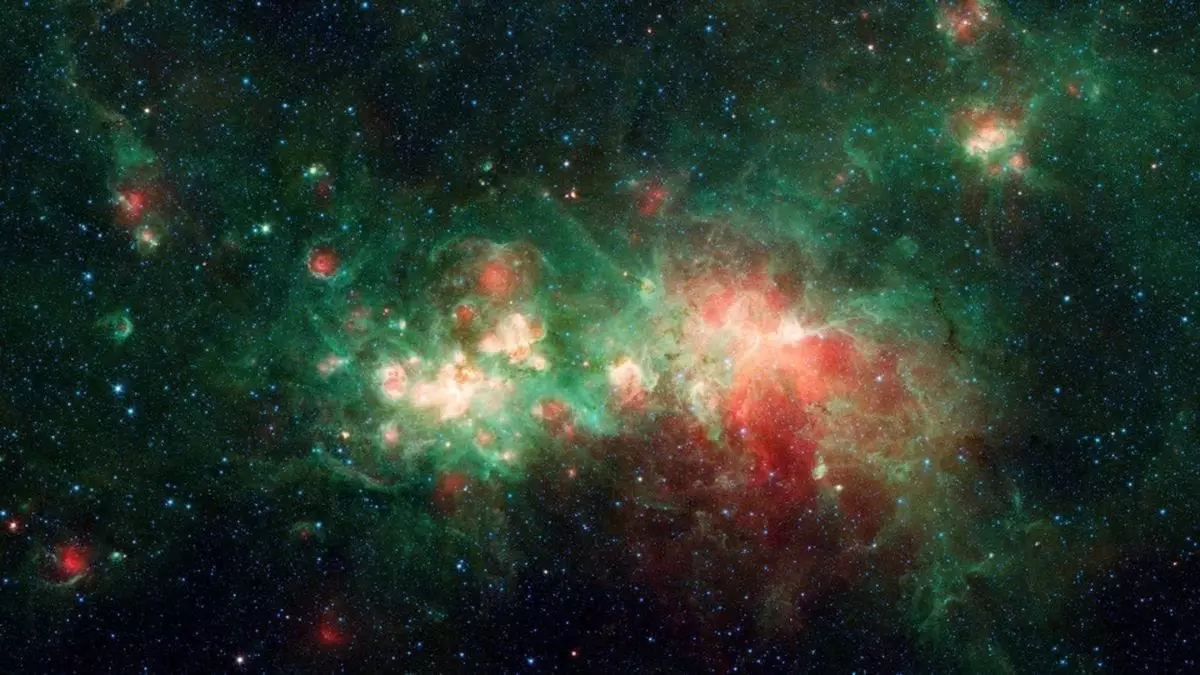Recent revelations stemming from extensive cosmic surveys suggest that the complexities of the universe’s evolution may extend far beyond conventional understanding. A notable study led by researchers Joshua Kim and Mathew Madhavacheril from the University of Pennsylvania, along with a team from Lawrence Berkeley National Laboratory, sheds light on these complexities by examining data from the Atacama Cosmology Telescope (ACT) and the Dark Energy Spectroscopic Instrument (DESI). Their collaborative efforts have unveiled subtle discrepancies regarding the distribution of cosmic structures, particularly in the universe’s last four billion years.
The investigation uniquely integrated the disparate data sets from ACT and DESI. The ACT’s measurements provide a glimpse into the primordial universe, capturing light emitted merely 380,000 years post-Big Bang, while DESI’s observations focus on a more contemporary epoch by mapping the three-dimensional positioning of luminous red galaxies (LRGs). By layering this critical information, researchers aimed to construct a more nuanced perspective of cosmic evolution that reflects both ancient and newer cosmic developments.
Examining the Sigma 8 Discrepancy
At the heart of the study lies the analysis of the clumpiness of matter in the universe, quantified by a crucial parameter termed Sigma 8 (σ8). The findings indicated a surprising dip in the expected σ8 value, leading researchers to question established cosmological models that traditionally dictate cosmic structure formation. The evidence suggests that while many observations align with Einstein’s gravitational framework, the peculiar lower σ8 may point toward outcomes not anticipated by existing theories on cosmic matter distribution.
One of the hypotheses emerging from these observations revolves around the role of dark energy in shaping cosmic structures. As dark energy is credited with accelerating the expansion of the universe, it may also potentially alter how these structures develop. Although the current deviation in matter clumpiness lacks the statistical weight to substantiate claims of new physics, it highlights the importance of further scrutiny in this domain. As researchers like Madhavacheril have indicated, the outcomes blend well with classical theories but hint at underlying complexities that might redefine our understanding of the cosmos.
Looking forward, the advent of sophisticated telescopes such as the Simons Observatory is poised to refine the current measurements and probe deeper into these discrepancies. The upcoming data will be instrumental in determining whether the observed anomalies are artifacts or indicative of broader, unaccounted cosmic phenomena. Continued research in this field aims to unravel these intriguing considerations, ultimately enhancing our understanding of the universe’s architecture and the dynamic forces at play.
The interplay of early universe observations and recent cosmic structures reveals a potentially intricate tapestry of cosmic evolution. The study led by Kim and Madhavacheril raises thought-provoking questions about the fundamental processes governing our universe. As scientists embark on further explorations to clarify these unexpected findings, the path to comprehending the cosmos remains an exciting and ever-evolving journey.

